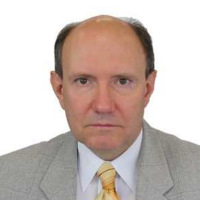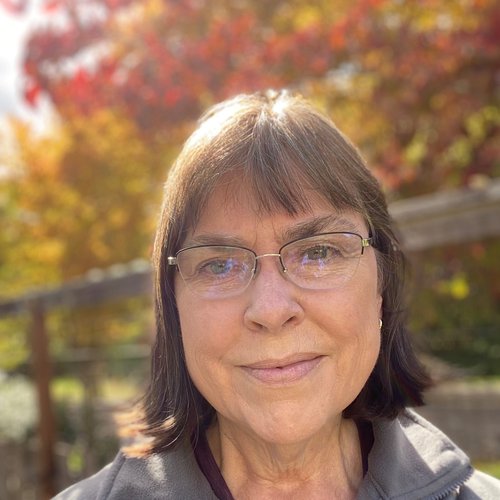The Future of Radiological Protection
Session 1: The Big Picture
Moderator: Christopher Clement
 |
Review & Revision of the System of RP
|
|
Author(s): Werner Rühm (ICRP Chair; Helmholtz Zentrum München, Germany) |
The International Commission on Radiological Protection has embarked on a review and revision of the System of Radiological Protection that will update the 2007 General Recommendations in ICRP Publication 103. This will take several years of open and transparent engagement with organisations and individuals around the world. While the System is robust and has performed well, it must adapt to changes in science and society. The paper “Keeping the ICRP Recommendations Fit for Purpose” (Clement et. al.), accepted for publication by the Journal of Radiological Protection, and the complementary paper "Areas of Research to Support the System of Radiological Protection" (Laurier et al.), accepted for publication by Radiation and Environmental Biophysics, were the first major milestones in this process, outlining areas that might need attention. The present workshop on The Future of Radiological Protection builds on these papers as a key opportunity for open and transparent discussion of areas of the System might benefit most from review. It is also an opportunity to describe and discuss ICRP’s collaborative approach to prepare for and develop a revised System of Radiological Protection for the next generation. Together, we must ensure that the System continues to rely on the best scientific knowledge and robust ethical principles and remains practicable. In addition to the many important scientific, ethical, and practical considerations, improved clarity is a high priority. To be effective the System needs to be understood, communicated, and applied worldwide.
 |
Working Together on Development of International Guidance Documents in Radiation Safety
|
|
Author(s): Peter Johnston (IAEA) |
The IAEA has in its statute the following obligation, “…establishes or adopts, in consultation and where appropriate in collaboration with the competent organs of the United Nations and with the specialized agencies concerned, standards of safety for protection of health and minimalization of health and minimization of danger to live and property...and provides for the application of these standards…”. Specifically, in the area of radiation safety, the IAEA cooperates very closely with the ICRP as the IAEA safety standards are based, to the extent possible, on the recommendations of the ICRP. This bi-lateral cooperation sets up a framework for enhanced interaction and information exchange on specific and jointly identified subjects of interest to both organizations, and is described in the formal Agreement between both organisations. The prime aim of the cooperation may also serve as an example of a good practice towards strengthening and harmonizing, to the extent applicable, application of radiation safety principles. Examples of recent activities where the cooperation led to publication of number of ICRP Recommendations and IAEA safety standards and guides, are:
- Development and sharing of information to improve radiation protection and safety in naturally occurring radioactive materials (NORM) that can impact the environment, public and occupational workers;
- Development and sharing of information to reduce radiation exposure to radon;
- Addressing radiation protection of patients, especially where new radiation technologies are used in medicine.
The presentation will also highlight selected areas were the implementation of safety standards based upon the recommendations of the ICRP have led to challenges in the Member States of the IAEA. As examples it will be addressing complications and challenges associated with identification of requirements (and recommendations) with one of the three exposure situations (planned, emergency and existing) and with three categories of exposure (members of the public, workers and patients), application of the principle of optimisation, and some others.
 |
IRPA Perspective on the Review of the System of Radiological Protection
|
|
Author(s): Sigurður Magnússon 1, Bernard LeGuen 2, Claire-Louise Chapple 2
|
The International Radiation Protection Association (IRPA), the global voice of the radiation protection professionals, has established a specific Task Group (TG) on the Review of the System of Radiological Protection. The goal is to facilitate active IRPA involvement in the review process proposed by ICRP. Furthermore, IRPA has informed all Associate Societies about this first step, encouraging them to organize feedback to ICRP, through the IRPA TG, and independently, on areas of the System that may benefit most from review, as well as early thoughts on directions for improvement of the System.
The Task Group has now 30 members from 17 Associated Societies representing thousands of RP professionals from all regions of the world. Feedback from Associate Societies has been sought through the members of the Task Group focusing on general comments on the System, specific comments on the areas of the System that may benefit the most from review, and on additional issues that should be considered by the ICRP as well as early thoughts on direction for improvement of the System. The feedback from Associate Societies will be consolidated to provide an overview reflecting areas of broad consensus and the spectrum of views of the radiation protection professionals.
The focus of the IRPA presentation will be on this consolidated feedback obtained from Associated Societies. This feedback will provide the perspective of the radiation protection professionals based on their practical experience living with the System.
Downloads SLIDES
 |
What Should be the Role of Higher Education in the Future of Radiological Protection?
|
|
Author(s): Kathryn A. Higley, Joshua T. Hargraves, Jillian Newmyer, Stephen M. Kustka, Brockway F. Elmore, III, Adam J. Stricker (Oregon State University, USA) |
As noted in the call for this workshop, the International Commission on Radiological Protection (ICRP) is embarking on a journey to review and revise the System of Radiological Protection (RP). In doing so, it is seeking input from stakeholders, and, among other actions, asking for advice on education and training. It would seem reasonable then that higher education be able to weigh in on the future of radiological protection. Unfortunately, higher education, which ostensibly serves as a key stakeholder in the RP system, does not currently have a defined role within which to engage the ICRP on this important topic. Historically the ICRP maintains formal relations with several organizations which deal with radiological protection. Among them are the International Commission on Radiation Units and Measurements (ICRU), the Organisation for Economic Co-operation and Development / Nuclear Energy Agency (NEA), the United Nations Scientific Committee on the Effects of Atomic Radiation (UNSCEAR), the International Atomic Energy Agency (IAEA), and many more. However, unlike these strategic liaison organizations (SLOs) with which ICRP interacts, there is no well-defined single organisation of academic radiological protection programs which can serve in an SLO role. This is problematic, as one could argue that students (and faculty) serve the RP system in a multitude of ways: as consumers of the RP system; as knowledge creators of the science used to underpin it; and, through individual contributions as members of ICRP or its task groups. The competency of tomorrow’s radiation protection professionals hinges on a deep understanding of the System of RP. It is critical that educators (and students) be integrated into the development process, to ensure that the system is robust, defensible, implementable, and EXPLAINABLE. This presentation explores ways in which higher education might function as an SLO, so that it can effectively contribute to the future of RP.
Downloads SLIDES
 |
Keeping the ICRP Recommendations Fit For Purpose and the Need for a Global North-South Collaboration
|
|
Author(s): Flavious Bobuin Nkubli 1, Dlama Zira Joseph 2, Alhamdu Silas Moi 1, Matthew Abubakar 1, Chigozie Nwobi 1, Christian Chukwuemka Nzotta 3
|
In a world that has been affected by the global COVID-19 pandemic, the idea of keeping ICRP recommendations fit for purpose is one whose time has come! However, the idea of keeping the ICRP recommendations fit for purpose cannot be achieved in isolation without a global North-South collaboration. Radiation protection experts from the global North who are versatile in the science and practice of radiation protection will have to collaborate with those from the global South and end-users to ensure that the system of radiological protection designed by ICRP to protect patients, workers, the public and the environment meets the need of end-users and produces the desired impact. End-users of radiation protection all work in diverse settings and contexts. Hence, the application of ICRP recommendations may vary for those in conflict and fragile settings who are often a neglected group. Authors of this paper who also work in conflict and fragile settings argue that there is a need for greater inclusivity through a global North-South collaboration over the next decade to develop the next fundamental recommendations that will shape radiation-related policy, practice, guidelines, and regulations around the world. The global road map for digital cooperation published by the United Nations in June 2020 at the peak of the COVID-19 pandemic could serve as a useful guide to make this a reality. This would ensure that existing divides are not further exacerbated by current physical restrictions.